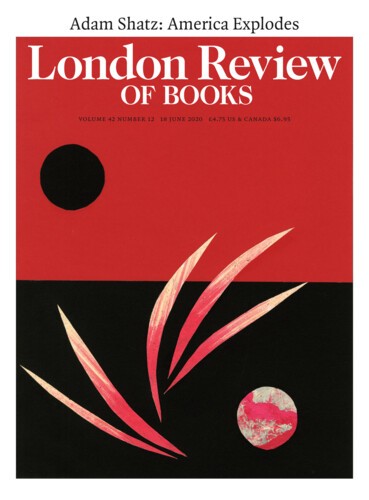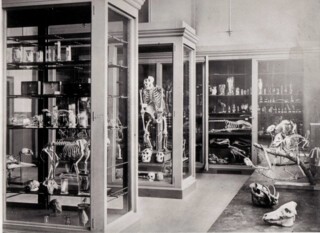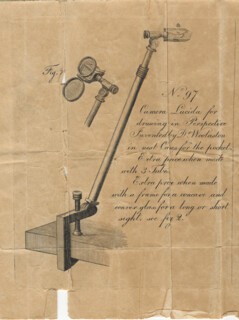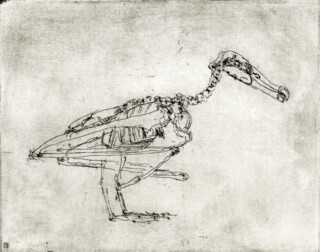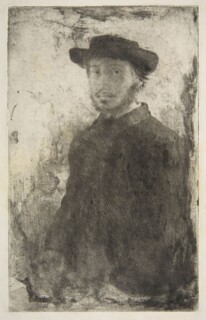Before my appointment with the albatross, I’d planned to draw it differently. We first met through glass: the skeleton was in a cabinet in the museum, displayed on a high shelf. If you looked up and dodged the reflections you could see the curved sweep of its beak and the Z-shaped slashes of its vast folded wings. Diomedea exulans, the wandering albatross, was an improbable bird, seemingly assembled from the disparate parts of others: a dodo here, a seagull there, a wingspan from something prehistoric. You didn’t need to know what it was, or to be reminded of the albatross’s association with luck or guilt or human burden, or even to understand how far this one must have travelled, to see the majesty and melancholy in the creature’s remains. This was Coleridge’s harmless bird ‘that loved the man who shot him’; Baudelaire’s ‘king of the blue’ brought ‘stumbling and ashamed’ into the orbit of men.
You could make a research appointment, I discovered, at UCL’s Grant Museum of Zoology, and the albatross would be taken out of the cabinet so you could see it up close. ‘As we are closed to the public in the morning,’ the curator told me, ‘you will have peace and quiet to draw the specimen.’ I began my preparations. I wanted to make etchings, which I was just beginning to learn to do. I bought a small torch so I could light the skeleton and cast shadows that would turn into aquatints. I found photographs of other albatross skeletons online and tried to map out a three-plate print, separated by thin vertical gaps like a Japanese woodcut. I imagined a grainy black background partly flecked with stopped-out stars, the albatross floating in the night. As I fell asleep I fantasised about an etching needle gliding across the dark waxy ground of the metal plate, a glint of copper coming through in its wake, tracing the shape of the bird’s beak and ribs, its wings and feet. Over and over in my mind I drew fine, fluid lines, like ice-skating or conducting or a sword fight.
Almost everything about the albatross is extreme. The wandering albatross, which is the largest of the 22 species now identified, has the widest wingspan of any bird (up to 3.5 metres). They are circumpolar. They can glide for hours without flapping their wings – a form of flight known as dynamic soaring, which has been studied by aerospace engineers in an effort to make drones more energy efficient. They mate monogamously and for life, after spending years practising elaborate courtship dances, but they only see their partner once every year or so, when they meet to produce a single egg. Until they’re old enough to breed, which can take up to a decade, albatrosses live in the air, never touching the earth. The oldest bird in the world (or at least the oldest any human has been able to track) is a Laysan albatross that still hatches a chick every year on an island midway between Asia and North America. She is thought to be 69 and to have flown a distance equivalent to circumnavigating the Earth 120 times.
It isn’t known whether the albatross already belonged to Robert Edmond Grant when he started to put together his collection in 1827. Grant arrived in London that year from Edinburgh, where he had taught Charles Darwin and studied marine invertebrates with him in the Firth of Forth. All 12 of Grant’s brothers joined the navy or worked for the East India Company; he stayed closer to home, becoming a founding professor of the University of London, and the first professor of zoology and comparative anatomy in the country. He walked across the Alps seven times and was familiar with the natural history collections of Florence and Paris. He knew Georges Cuvier and was described by Geoffroy St Hilaire as ‘le premier entre tous les savans’.
When gathering specimens for the new ‘people’s university’, Grant probably asked his wide and well-travelled network of friends for donations. The albatross arrived at some point between 1827 and the 1880s, when a photograph shows it on display (Grant died in 1874). An inventory dated 1850 lists 64 bird skeletons without specifying the kinds of bird. The museum’s first catalogue, which does mention the species by name, was compiled in 1890. Based on the patina on the bones and the style in which the skeleton is mounted, the wandering albatross is likely to be one of the earliest specimens in the collection. But even if we could work out when it was acquired, there’s no record of its sex, age or country of origin.
Although Grant remained at the University of London until his death, the debates over evolution in the 1830s led to his being ostracised from the scientific establishment (his love of opera, familiarity with foreign languages and the fact that he never married probably also positioned him as an outsider – as did his caustic tongue). His dissemination of Lamarckian ideas had an influence far wider than his zoological contributions to the study of marine life, but he was reduced to living in a slum, and delivered his lectures in a tattered tailcoat. One of his supporters was Thomas Wakley, the editor of the Lancet, who in 1833 sent a shorthand writer to take down sixty comparative anatomy lectures given by Grant, and proceeded to publish them at the rate of one a week. In the course of two lectures on the osteology of birds, Grant used the specimens in his collection as demonstration models. ‘I hold in my hand the two clavicles, anchylosed, of the great condor of the Andes,’ he announced, pointing out that birds were particularly remarkable for their skeletons. ‘In the texture and composition of the bones, the class of birds has arrived at the maximum of development known in the animal kingdom.’
Grant guided students through every part of a bird’s body: the way its neck was used as a prehensile hand; the trunk vertebrae ‘almost as fixed as that of a tortoise’; the enormous orbits of its skull; the complex structure of the wings; legs ‘totally destitute of plumage’; the arrangement of the toes. He referred to albatrosses when describing their bills shaped ‘for pouncing upon a fish’, but he doesn’t seem to have had a specimen to hand, although he showed his students the sternum of a peacock, the nostrils of an osprey and the ‘sigmoid flexure’ in the neck of a swan.
I’d bought a large drawing board to the museum, but realised that I wanted to make a much smaller sketch, using a camera lucida I’d found a year earlier at an auction of ‘fine photographica and instruments of science’. It was lot 108: ‘A camera lucida, English, 19th-century, in lacquered brass, in velvet-lined mahogany case, with period detailed illustrated instruction leaflet’. Invented in 1806 and widely used in the 1820s and 1830s, the camera lucida was the last popular drawing aid adopted by artists before the advent of photography. Unlike a camera obscura, which is, literally, a dark room or chamber into which an image is projected, the only ‘room’ in the camera lucida is a small, four-sided glass prism fixed to the top of an extendable brass rod. Because it causes an image to appear over the drawing surface, it offers the possibility of putting objects in perspective with confidence and speed – a camera obscura minus the dark. The prism is about the width of a human eye, and at the other end of the rod, a vice allows you to screw the whole thing to your desk or drawing board. It’s small and simple – William Hyde Wollaston, the chemist who invented it, could fit his whole laboratory on a tea tray – and it appears to work, as you look through the prism, by projecting the object in front of you onto the paper beneath your hand.
But there is no projection. The image is trapped inside the prism. No one around you can see it – it’s almost a hallucination. David Hockney, who took up drawing with a modern camera lucida in 1999, described it in Secret Knowledge (2001) as projecting not ‘a real image of the subject, but an illusion of one in the eye’:
At first I found the camera lucida very difficult to use … When you move your head everything moves with it, and the artist must learn to make very quick notations to fix the position of the eyes, nose and mouth and to capture a ‘likeness’. It is concentrated work.
The first time I tried to use mine, dejection was swift. The 19th-century instructions weren’t much help in angling the prism. The image was disconcertingly doubled – more like a migraine than a magic trick. Even when you could focus, you couldn’t see your drawing hand, or you could one minute and not the next. If you blinked it was a disaster. I found the whole enterprise confusing and over-complicated. No wonder it never caught on, I thought.
At the time, the camera lucida was said to be unpopular because amateurs either couldn’t get the hang of looking through the prism or didn’t like the drawings they produced. Henry Fox Talbot’s response, which he noted in The Pencil of Nature, was typical:
I was amusing myself on the lovely shores of Lake Como, in Italy, taking sketches with Wollaston’s Camera Lucida, or rather I should say, attempting to take them: but with the smallest possible amount of success. For when the eye was removed from the prism – in which all looked beautiful – I found that the faithless pencil had only left traces on the paper melancholy to behold. After various fruitless attempts, I laid aside the instrument and came to the conclusion, that its use required a previous knowledge of drawing, which unfortunately I did not possess.
He went on to record what he saw by chemical means – which caused ‘natural images to imprint themselves durably and remain fixed upon the paper’.
Yet when the painter John Sell Cotman was given a camera lucida in 1817, he wrote to a friend that ‘they are used by all ye artists I find!’ The prolific Victorian sculptor Francis Chantrey used one to sketch three views of each of his sitters, which he would give to his assistants as the basis for a bust. The Scottish optics expert David Brewster remarked in 1831 that it had ‘come into very general use’. A piece in Mechanics Magazine around the same time noted that it was ‘used to an extent that will scarcely be credited’.
Scientists, architects, archeologists, explorers: people working in all these fields used the camera lucida. The most significant portfolio of camera lucida drawings was made by the astronomer and chemist John Herschel. On his Grand Tour with Charles Babbage in 1821, Herschel’s travelling equipment included a mountain barometer, a pocket compass, a small sextant, two mineralogical hammers, a camera lucida and a drawing board. He drew the Alps, the crater of Vesuvius and the peak of Mount Etna. The notes on his drawings include navigational co-ordinates and geological formations.
Some artists were ambivalent. The retired Scottish naval captain Basil Hall, who was one of the device’s greatest advocates and the probable reason for its widespread use in Scotland, wrote that artists were ‘apt to feel a sort of humiliation when borrowing instrumental assistance’. They needn’t worry, he said: ‘The Camera, though possessed of great powers, has no means of supplying intellect, taste and industry to persons who by nature are destitute of these gifts.’ Hockney tried to make a similar point: ‘Let me say here that optics do not make marks.’
If you’re interested in 19th-century pioneers of light, sooner or later you want to try to see what they saw. Brewster invented the kaleidoscope. Herschel taught his friends how to print nature in blue (cyanotypes – the original blueprints). Joshua Reynolds disguised his portable camera obscura as a book (when you opened it, the view appeared upside down). I liked the way you could flip, slice, tone, multiply or otherwise reformulate your vision. ‘Photogenic drawing’, an image created by light, might as well have been a psychogenic symptom in the 1830s. Tricks of the light, tricks of the mind: photography was magical thinking, corroborated.
A while after my first attempts with the camera lucida I tried again, expecting nothing. I found that my eye could withstand the strange balance of peripheral vision for increasingly long periods, but it was never more than ten minutes before the whole illusion vanished. (This was what Hockney meant when he wrote about having to find quick forms of notation.) One thing that was especially odd was that even if you could just about see your hand you couldn’t see the marks it was making: the drawing was indistinguishable from the illusion. The process was like drawing blindfold, although it was really the opposite – a surfeit of seeing. The wonkiness or wooziness of the drawings was like automatic writing. They were accidentally expressive. If you were after exactitude this was no way to go about it, but if you thought of the prism as producing an apparition – reminiscent of Pepper’s Ghost – then the drawings were just right: as if summoned during a séance.
Eventually, what Talbot found maddening felt liberating to me. In weekly life drawing classes I had developed a correctness compulsion: when I realised I was capable of producing a decent likeness of a person I was seized by an urge to repeat it, fuelled by adrenaline and an appetite for accuracy. The results were stiff and disappointing. The camera lucida offered the opposite: something that was impossible to intend fully. The drawings were semi-conscious, made at great speed in order to record an illusion, the way you might wake up and try to write down what had happened in a dream. My favourite results were those that didn’t quite look like something I’d made, yet felt like something I meant.
By the time I used the camera lucida in the museum, I’d spent several months grappling with the strange proposition offered by its prism. I’d read that the image was sharper if you held it over a dark drawing surface, but that didn’t make any sense to me until the smoked metal etching plate was beneath my hand. Suddenly the albatross skeleton appeared on it: bright, spectral. The process was different from the way I’d imagined it. There was a drag, almost a dance, under the needle – a tiny jump of resistance in the copper. Without seeing what you were doing, you could feel it more keenly. It wasn’t like ice-skating at all.
As a novice etcher, I have spent quite a bit of time thinking about ‘states’. Although I’d seen references to an etching’s state – ‘second state of four’, ‘fifth state’ and so on – I hadn’t really taken in what it meant. When you make an etching you tend to work on it in layers, and often over a long period. Painters do that too, but when you’re etching the only way to see the result is to print it (apart from anything else, the print is backwards in relation to the plate). The finished plate, which can be used for hundreds of near identical prints, will have produced printed records of its younger selves, or ‘states’. Of course, you don’t have to call your early trials ‘states’ – you could just call them rubbish and throw them in the bin. But artists often make editions of different states, and collectors might acquire several of them. There’s an acknowledgment, when dealing with this medium, that one image is haunted by its ancestors or alternates.
Most people in my etching class felt, as I did, that their fear of the blank page was intensified when the page was made of metal. The permanence of the marks seemed alarming. But one of the first things you’re taught is the flexibility of the etching plate. Making a change on metal is more laborious than rubbing something out on paper, but metal is much more durable, and will withstand more changes. You can bite (with acid) or burnish off weeks of work and begin smoothly again, printing an image that looks as fresh as it did at the start.
Once you grasp the notion of states you realise that etching is a process in which changing your mind is part of the grammar. If you insist on planning everything in advance, without leaving yourself open to chance and to the effects of time, you’re not really speaking the language of etching. ‘Don’t block the inherent characteristics of the process,’ our tutor told us. The image, he said, should be ‘restless’.
When you look at the different states of prints by Rembrandt or Goya or Manet or Degas, you can trace their changing intentions. For instance, a self-portrait made by Degas when he was 23 began as a light etch, with fine, spaced-out cross-hatching. Later, it became richer – the lines dense and black – yet remained a faint idea of a self: the hands unfinished, the features withheld within shade. The first state might be mistaken for hesitation; the second proves it to have been restraint, now more explicitly delivered.
When an etcher thinks a plate has reached the end of its lifespan, or doesn’t wish to authorise further prints, she or he can ‘cancel’ it by scratching lines across the metal. This early self-portrait was one of 21 plates cancelled by Degas with a diagonal slash, then sold to his dealer Ambroise Vollard. After Degas’s death Vollard made editions of 150 prints from each of these. They’re unsigned, of course, and much less valuable than the original states, but they are nonetheless works by Degas. Scarred, denied, sold and reinvented, the prints from the cancelled plates seem like a posthumous message from the cantankerous artist himself.
Rembrandt, the godfather of etchers, was better known in his lifetime for his prints than for his paintings, and would sometimes return several years later to a plate, continuing to play with the process. A few of the changes he made were dramatic – an entire crowd scene removed and replaced by architecture, for instance. Other changes were tiny: a key added to the side of a stove, a bonnet swapped for hair. There was a financial incentive, of course: even a change as small as that would constitute a new state, and a whole new edition could be put up for sale.
When my plate was processed and printed – a chemical bite into metal; a slow rotating wipe of blackened scrim; a heavy roll of the printing press – the effect, at least to my eyes, was of an image slightly suspended over the paper. This ghostly aspect, plus the suggestion of a fossil record in the grooves of the plate itself, seemed apt. There was another element too: a clumsiness or sadness, as if chance had found something in the albatross that I’d seen at the start but forgotten. This was the first state, and I let it hover there. Later, I added some aquatint shading, which gave it more depth, but made it seem more conventional, less surprising.
It’s perhaps too fanciful to say that the state of an etching bears a relation to its maker’s state of mind. It doesn’t, really – or not necessarily. But at the very least it’s something fluid. If each state suggests a sequence, then every etching is a narrative image by implication. This idea pleases me more than I can explain: the work of art as open-ended train of thought.
I had made another appointment to see the albatross in April, but went back before then. I wanted to try etching on a bigger plate, and I had an idea, too, for a series of etchings of specimens in the museum – skeletons drawn with the camera lucida. I made a list: the thylacine, now extinct and lit for menace; the babirusa skull, tusks curling backwards towards its forehead; the unprotected underside of a giant turtle; the gibbon, long palms facing upwards; the armadillo with its levitating carapace; a fish; a frosted bat; the oldest penguin. I set to work: camera lucida, etching plate, needle. As I traced the albatross’s outline for the second time, I could hear the curator on the phone, receiving instructions to close the museum for the foreseeable future. I put down my needle and looked at the bird’s face. Its skull was tilted to the left, as if asking a question. I packed up my things.
Send Letters To:
The Editor
London Review of Books,
28 Little Russell Street
London, WC1A 2HN
letters@lrb.co.uk
Please include name, address, and a telephone number.
